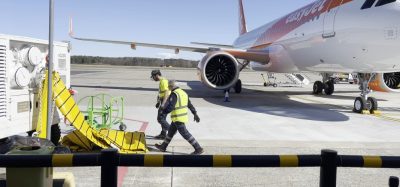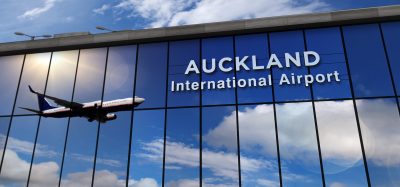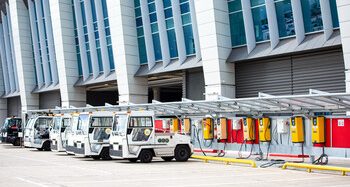Perfect partnerships – Dimitrios Sanos, IATA
- Like
- Digg
- Del
- Tumblr
- VKontakte
- Buffer
- Love This
- Odnoklassniki
- Meneame
- Blogger
- Amazon
- Yahoo Mail
- Gmail
- AOL
- Newsvine
- HackerNews
- Evernote
- MySpace
- Mail.ru
- Viadeo
- Line
- Comments
- Yummly
- SMS
- Viber
- Telegram
- Subscribe
- Skype
- Facebook Messenger
- Kakao
- LiveJournal
- Yammer
- Edgar
- Fintel
- Mix
- Instapaper
- Copy Link
Posted: 20 September 2016 | Dimitrios Sanos: IATA | No comments yet
Dimitrios Sanos, IATA, reveals how Standard Ground Handling Agreements and Service Level Agreements can complement excellent ground service provisions…


In the airlines/service provider world the ‘SGHA’ acronym has significant importance. The Standard Ground Handling Agreement is a heavily used document that defines the business relationship between airlines and ground service providers. It is an industry-agreed contract template for the provision of ground handling services. Both commercial and operational details are included simultaneously in the same document.
Of course, these agreements are at the centre of every business negotiation between the partners and sometimes it becomes difficult to efficiently express the business requirements and conditions within the frame of this standard. Looking at it from an industry-wide perspective, the SGHA is probably in the top five commercial agreement texts in the world in terms of effectiveness and applicability. Attempting to make a high level calculation of the airline – provider pairs that use the SGHA, by multiplying the number of airlines in the world multiplied by the number of destinations where they land around the globe, it is clear that considering the business, operational and cultural complexities it deals with, this is a very good business tool. As an indication of the wide acceptance of SGHA, since 2012 we have seen more than 650 professionals from 94 countries receive specialised training in it from IATA. It is not easy to find another example from any other industry where the same contract template is applicable with minimum customisation in almost all countries in the world.
This does not happen by chance. The agreement has been constantly improved for several years by industry experts. In the late- 1950s, as airlines started focusing on the core task of transporting passengers and goods, ground handling companies started providing services to meet the heightened requirements for safe and efficient services. A group of airlines in Europe identified the need for a standard to derive the cooperation in the provision of services at the airports, either reciprocally or bilaterally. In 1988, the first IATA Ground Handling Council (IGHC) took place in Montreal and replaced the Airport Handling Committee. Since then the Aviation Ground Service Agreements Task Force (AGSA) has worked every year to improve and update the SGHA. The AGSA Task Force comprises commercial and operational experts involved in ground handling contract negotiation and is represented by airlines, ground handling companies and airports.
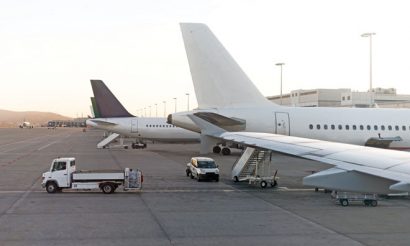

As the industry evolves, air travel becomes more complex and new technologies are introduced, the SGHA is modernised to reflect changes in the business environment. The updated agreement is presented every five years to the members of IGHC, who vote to accept the changes. This adds great value to the effectiveness of the agreement. There is frequent debate among the users of the agreement about the need (or the hassle) for a new version of it. But on balance, most agree it is important to do business using the latest and most accurate tools available. It’s like the users of smartphones and the upgrade to the latest version of their operating system. Yes, the user can still use the older version and ‘live with it’ but with the new version they can do much more. For example, today it is not possible to use the agreement text of the 2004 version to outsource airport automated check-in support and management, because the service is not described in the text (IT supported check-in was not a widely available option at the time of the revision). The advance of technology and innovation that is introduced in our industry every year is so significant that any standard has to be reviewed on a regular basis.
Besides several standard descriptions of ground services, SGHA provides the framework for an easy-to-use commercial agreement with terms including, but not limited to, fair practices, safety, subcontracting, liability and indemnity, payment, duration, modification and termination. The combination of relative simplicity and wide applicability allows aviation professionals who do not have an extended legal or procurement background to use and establish contractually sound service agreements. After all its years of use, SGHA is now a commonly spoken language between airlines and ground services providers all over the world. It is a business communication tool about the need and offering of airport services. The standard descriptions of services allows users to accurately select the services required at each location, allowing customisation for an airline’s local specificities, and be able to compare and select the most appropriate service offering.
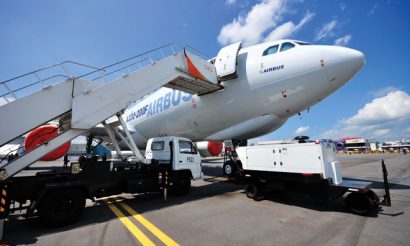

The Service Level Agreement (SLA) was introduced as another template for the support of airlines and ground service providers approximately 12 years ago, as part of the IATA Airport Handling Manual. Some believe that an SLA introduces an excessive sense of control and close monitoring of performance, so SLAs are not always perceived positively. Nervousness may be a natural reaction when working under constant observation and measured thoroughly in the performance of tasks against clearly defined targets. The introduction of Key Performance Indicators (KPIs) that become part of the contractual obligations – the defining characteristic of an SLA – can bring a mini crisis in the business relationships between two parties, especially when they are linked to bonus/malus schemes. Overall, even if the usefulness of SLAs is recognised, the introduction, negotiation and acceptance of them faces some scepticism. There are valid questions to ask when one party is seeking to implement an SLA. If those questions are not perceived negatively, but rather answered with the intention to enhance cooperation and find a fair solution for both parties, it can help the situation.
Some of the questions typically asked include “we have been living so many years without SLAs, why do we suddenly need one?” and “I already have an SGHA in place, why do I need an SLA?” The answer is there is always room for improvement and add further clarity to the business relationship. The introduction of an SLA does not necessarily signal a problem with the existing service provision. Since consistency is a core element of quality maybe an SLA with the same or similar targets around their network of ground handlers is the main tool for an airline to ‘consistently’ meet the needs of their customers. Furthermore in many cases it is not enough to just know what is needed – both parties also need to have more details of the expectations. If a group of friends go to a restaurant and they all wish to eat a steak, this information is not enough for the waiter. In order to meet expectations the restaurant staff will also ask how to grill the steak for each customer.
Another viewpoint is “my service is so good that my customers don’t need SLAs”.
That is a great statement when true, but how is it possible to quantify and prove this statement if there is no SLA in place?
Imagine a service provider, who has provided excellent services to an airline for several years, finds it is the time to ask for a well-deserved renewal of the contract. Besides the simple statement above, how is it possible to present proof of quality performance? The data from an SLA performance review is the perfect answer.
The combination of a properly written SGHA and SLA can be the best possible solution for high quality services and prosperous cooperation. Without oversimplifying the process, we can say that SGHA indicates ‘what’ is needed and the SLA ‘how’ the requirements are fulfilled.
It should be pointed out that SLAs are not substitutes for Ground Operations Manuals and Standard Operating Procedures. The procedures are clearly described in the respective manuals. The SLA complements these and should include targets that can be measurable and achievable. Vague statements and ‘wishful’ descriptions do not add value to the SLA and cooperation overall. Using the quick check-list below is a good test of the effectiveness of the SLA’s stipulations:
- Is the text clear and the target understandable?
- Is the number target achievable?
- How often will this target will be measured? (sampling rate or periodicity)
- Who will be measuring or what will be the source of measurement data?
- How often will the two parties meet to analyse, discuss and make a corrective action plan?
The last two questions are especially important to understand if performance is on the right track, or if it has fallen into the trap of ‘copy pasting’ of targets that have not been checked. For example, perhaps a useful requirement for customer friendliness is ‘always smile to passengers’. Indeed it is great if all service agents smile to all passengers but how can it be measured and documented? It is always interesting to see which targets can be measured when an airline has no or very little local representation. Secondly if both parties do not have any intention (or they have no time and resources) to meet frequently to review the performance of the SLA then why bother taking detailed measurements at short time intervals?
Finally it would make the SGHA and SLA one of the most important business tools in ground handling business if we see the SLA as a ‘signalling’ mechanism.
A well thought-out SLA can be a great means of communication to show which items are considered as high priority and what are the primary business objectives. Yes, smiling to passengers is important but it should not have the same weight within an SLA as a target related to the ‘accuracy of the load sheet’ for example. So the SLA probably is the right place to show the prioritisation that should be given to the turnaround services of an aircraft. Of course safety should be and always is the highest priority. It is up to the two parties using and agreeing on an SGHA and SLA to prioritise all the other elements, like on-time performance, passenger convenience, cost containment and many others that each airline and ground service provider can define, based on business needs.
Biography


He is a physicist and graduate of the University of Kent, with a Master’s Degree in Airport Planning and Management from Loughborough University, and Master’s in Business Administration from the University of Kent. He has followed executive education short courses at Harvard Business School in the area of Strategic Marketing. Prior to joining IATA, he worked in the Airline and Ground Handling sector in Greece, in different operational and management positions.




